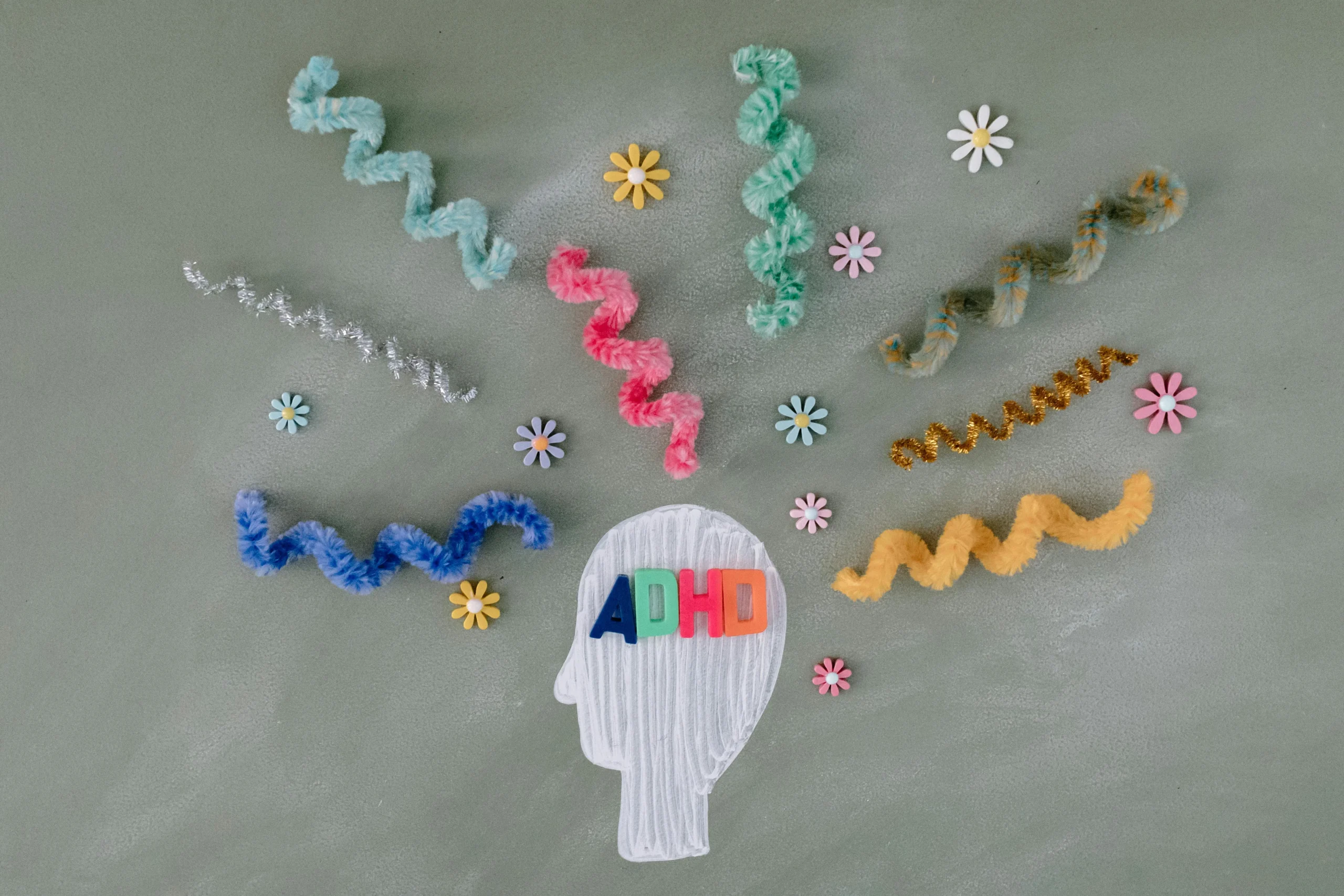When most people think of Attention-Deficit/Hyperactivity Disorder (ADHD), they often picture a hyperactive child bouncing off the walls in a classroom. However, ADHD doesn’t just affect children—it can persist into adulthood, and for some, it may not even be diagnosed until much later in life.
Adult ADHD can manifest very differently than in children. The hyperactivity might be less visible, but the struggles with focus, disorganization, impulsivity, and emotional regulation can create deep challenges in professional, personal, and social settings.
In this blog, we will explore:
- What ADHD looks like in adults
- Common symptoms and diagnostic criteria
- How it affects relationships, work, and mental health
- Available treatments and coping strategies
- The importance of therapy and support
Let’s shed light on this often misunderstood condition and explore how individuals with adult ADHD can thrive, not just survive.
Table of Contents
ToggleWhat is Adult ADHD?
ADHD (Attention-Deficit/Hyperactivity Disorder) is a neurodevelopmental disorder that affects the brain’s executive functions—skills related to planning, attention, memory, and self-control.
Although commonly diagnosed in childhood, ADHD often continues into adulthood. It’s estimated that around 4.4% of adults in the U.S. have ADHD, and many remain undiagnosed or misdiagnosed.
Adult ADHD is not about being lazy or careless—it’s a legitimate medical condition rooted in neurological differences in how the brain regulates attention and behavior.
Core Symptoms of ADHD in Adults
ADHD symptoms in adults fall into two main categories:
1. Inattention
- Frequently losing things (keys, wallet, phone)
- Trouble focusing on tasks (meetings, reading, emails)
- Forgetting appointments or deadlines
- Making careless mistakes
- Getting easily distracted by external stimuli or internal thoughts
- Difficulty organizing tasks or managing time effectively
2. Hyperactivity and Impulsivity
- Talking excessively or interrupting others
- Difficulty sitting still (fidgeting, tapping, restlessness)
- Impulsive decisions (spending, quitting jobs, jumping into relationships)
- Low frustration tolerance
- Emotional outbursts or mood swings
Many adults may internalize hyperactivity as restlessness, anxiety, or a constant need to stay “busy.”
Why ADHD Often Goes Undiagnosed in Adults
Several reasons contribute to adult ADHD being overlooked:
- Symptoms change with age – adults may not appear hyperactive but still struggle internally.
- Coping mechanisms – intelligent or high-functioning individuals may have developed tricks to mask symptoms.
- Misdiagnosis – symptoms overlap with anxiety, depression, or bipolar disorder.
- Gender bias – ADHD in females often presents differently and may be missed due to social conditioning or stereotypes.
Many adults only realize they may have ADHD when their child is diagnosed, prompting reflection on their own experiences.
Real-Life Challenges of Adult ADHD
ADHD can significantly impact various areas of an adult’s life:
1. Workplace Challenges
- Missed deadlines
- Difficulty following instructions or completing long projects
- Trouble sitting through long meetings
- Procrastination
- Getting bored easily and jumping from job to job
2. Relationship Struggles
- Forgetfulness or not listening during conversations
- Mood swings or emotional reactivity
- Poor follow-through on promises or responsibilities
- Partner feeling like they “parent” the ADHD individual
These issues can lead to misunderstandings, resentment, or frequent conflicts in romantic and family relationships.
3. Financial Management
- Impulsive spending
- Difficulty budgeting or keeping track of bills
- Overdue credit cards or penalties due to disorganization
4. Low Self-Esteem
Years of struggling to meet expectations, being called “lazy” or “irresponsible,” or dealing with failures despite effort can lead to chronic shame, anxiety, and imposter syndrome.
The Science Behind ADHD
ADHD is believed to be related to differences in the dopaminergic system of the brain. Dopamine is a neurotransmitter that helps regulate mood, motivation, reward, and attention. People with ADHD often have lower levels of dopamine, making it harder to feel “rewarded” by routine tasks.
The prefrontal cortex, which governs executive functions, also shows altered activity in ADHD brains. This can lead to:
- Trouble with decision-making
- Poor impulse control
- Difficulty prioritizing tasks
ADHD is highly heritable, meaning it often runs in families.
Diagnosis: How Is Adult ADHD Identified?
There’s no single test for ADHD. Diagnosis typically involves:
- Detailed personal and family history
- Symptom checklists (like the Adult ADHD Self-Report Scale – ASRS)
- Interviews with mental health professionals
- Input from partners, colleagues, or family members (if available)
To meet criteria for diagnosis, symptoms must:
- Be present since childhood (though not always diagnosed then)
- Cause significant impairment in at least two areas (e.g., work and home)
- Not be better explained by another condition
A trained psychologist, such as Arpan Sarma, can conduct comprehensive assessments and guide the individual through the diagnostic process.
Treatment Options for Adult ADHD
There’s no cure for ADHD, but effective management is entirely possible with a combination of:
1. Medication
Stimulants like methylphenidate (Ritalin) and amphetamine (Adderall) are often prescribed. They help increase dopamine and norepinephrine levels in the brain, improving focus and reducing impulsivity.
Non-stimulants like atomoxetine or bupropion may be used if stimulants are not suitable.
2. Cognitive Behavioral Therapy (CBT)
CBT helps adults:
- Challenge negative thought patterns
- Build new coping strategies
- Improve time management and organizational skills
It’s especially helpful for emotional regulation and self-esteem issues.
3. Coaching and Skill-Building
ADHD coaches help individuals set goals, stay accountable, and develop routines that work with their brain—not against it.
Techniques may include:
- Prioritization frameworks
- Visual reminders
- Time-blocking strategies
4. Mindfulness & Relaxation Techniques
Mindfulness meditation can help calm the racing mind and improve awareness, focus, and impulse control.
Apps like Headspace or Insight Timer are great starting points.
Self-Help and Daily Management Strategies
1. Use External Aids
- Alarms, planners, checklists, sticky notes
- Visual cues for remembering tasks
2. Break Tasks into Small Steps
- Big projects can feel overwhelming. Break them into micro-tasks and reward yourself along the way.
3. Limit Distractions
- Use website blockers (e.g., Cold Turkey, Freedom)
- Keep your workspace clutter-free
- Use headphones or background white noise
4. Establish Routines
Routine reduces decision fatigue. Start with a consistent morning and bedtime routine.
5. Practice Self-Compassion
Understand that ADHD is not a character flaw. You are not broken—you just need different strategies.
How Partners and Family Can Support
Having a loved one with ADHD can be frustrating, but with understanding and patience, you can support their success.
Tips for Supporters:
- Educate yourself about ADHD
- Avoid blaming or shaming
- Use reminders and shared calendars
- Encourage treatment and celebrate progress
- Communicate openly and with empathy
Therapists like Arpan Sarma often offer family or couples counseling, which can be beneficial in navigating challenges together.
Real-Life Case Study: Priya’s Journey with ADHD
Priya, a 34-year-old marketing professional, had always felt “different.” She missed deadlines, forgot meetings, and jumped between jobs. After years of anxiety and burnout, she consulted a psychologist and was diagnosed with ADHD.
With medication, weekly CBT sessions, and ADHD coaching, Priya created new routines, delegated tasks, and built self-confidence. She now leads her team with empathy and runs a blog to support women with ADHD in the workplace.
Her message: “It’s never too late to understand your brain and reclaim your story.”
When to Seek Help
If you experience:
- Chronic disorganization or underachievement
- Poor time management affecting your work
- Emotional dysregulation and impulsive behavior
- Trouble maintaining relationships or finances
- High levels of stress, anxiety, or shame
…it may be time to consult a mental health professional.
Early diagnosis and treatment can drastically improve your quality of life. Experts like Arpan Sarma can help you navigate this journey with skill, compassion, and science-backed interventions.
Conclusion: Thriving with ADHD
ADHD is not a life sentence of chaos and failure—it’s a different way of experiencing the world, with its own strengths and challenges.
With the right diagnosis, individualized treatment, and consistent support, adults with ADHD can unlock productivity, creativity, and resilience.
You are not alone. You are not lazy. You are not broken.
You’re just wired differently—and that’s okay.







